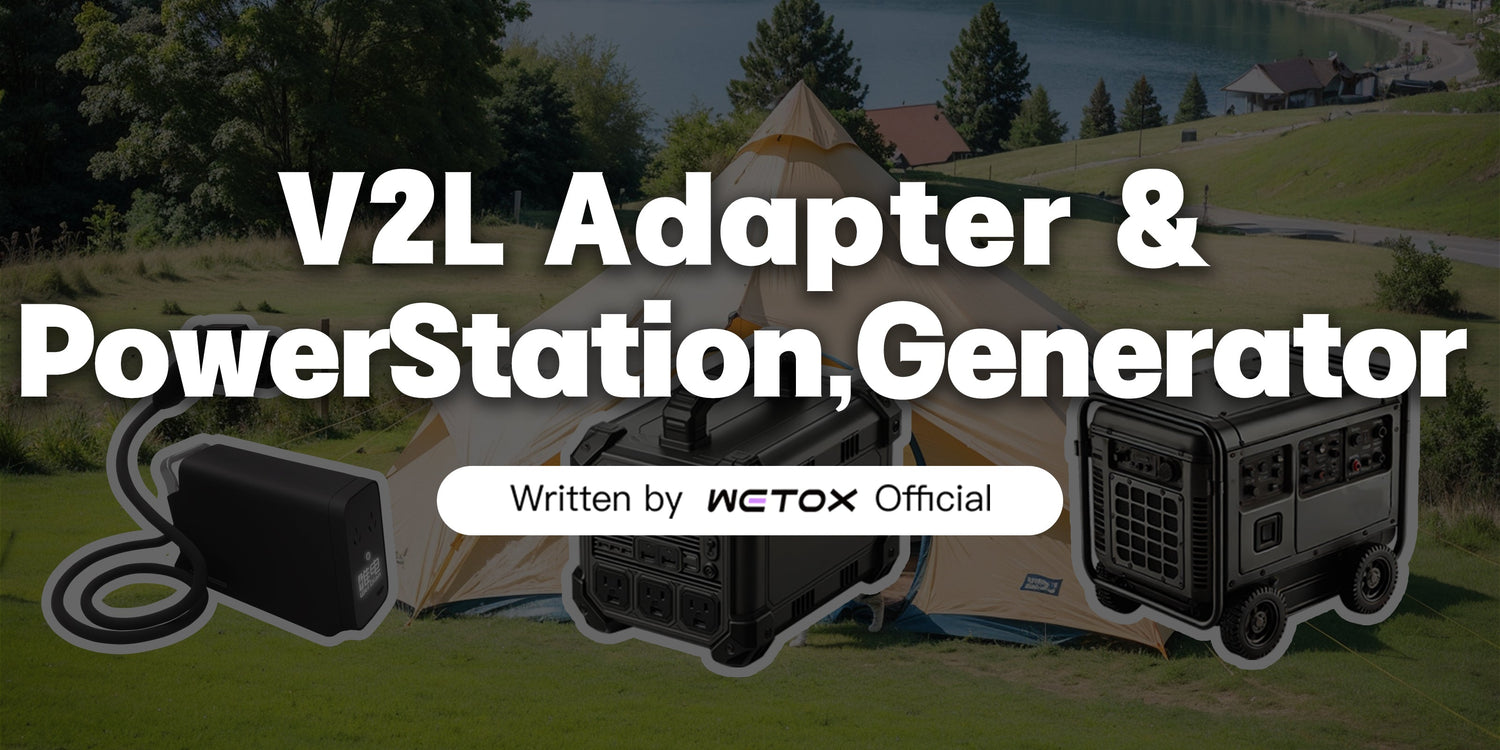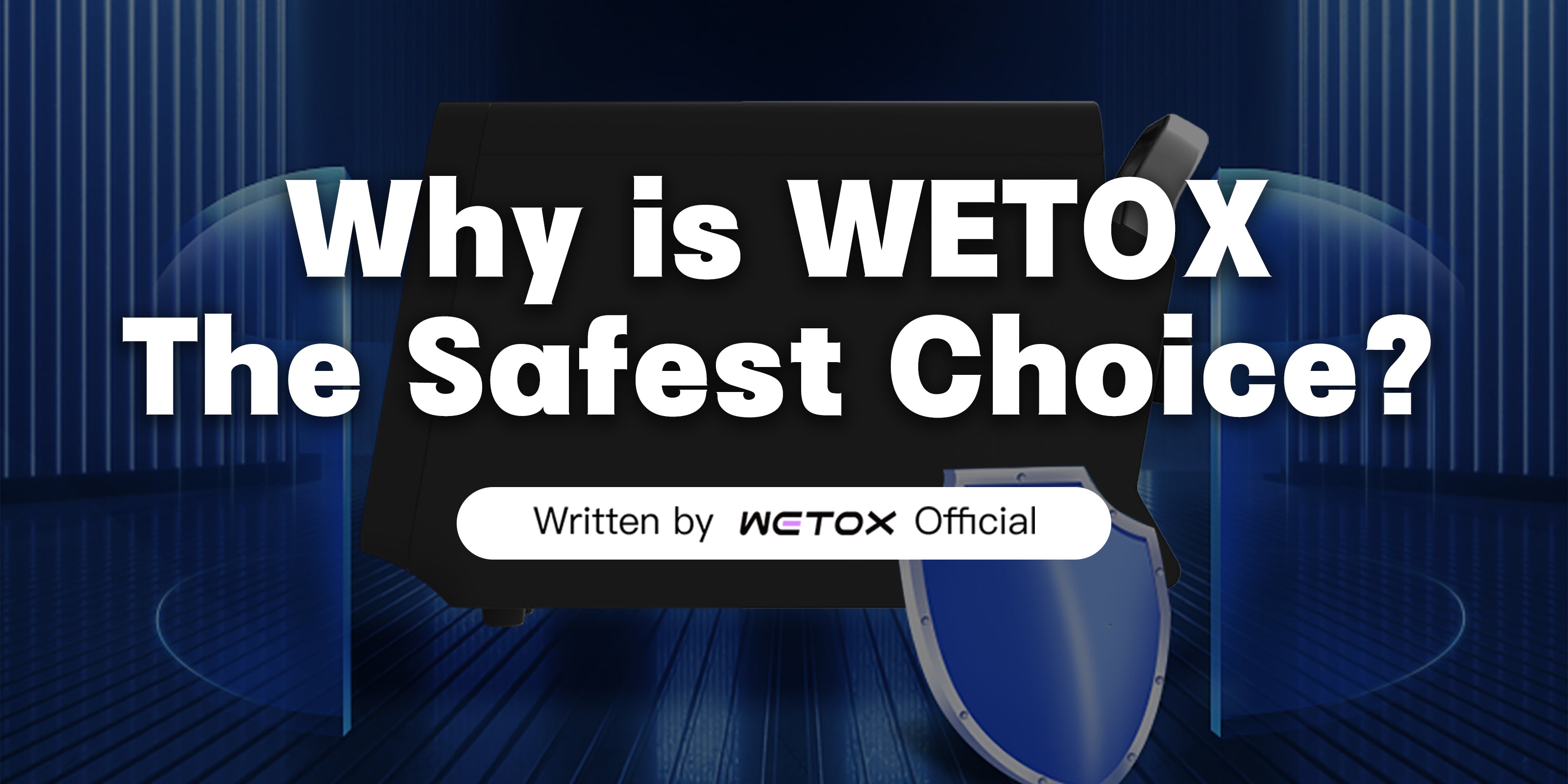"Once you drive a Tesla, you’ll never want to go back to a gas-powered car." This is something you’ll often hear from Tesla owners. Beyond its powerful acceleration and intelligent FSD experience, there’s one thing gas-powered cars can never do—V2L (vehicle-to-load).

Tesla's traction battery can support discharging through the WETOX PowerShare D2. The Model 3 has a battery capacity ranging from 52 to 78.4 kWh, while the Model Y ranges from 60 to 78.4 kWh. The new Model S and Model X are equipped with 100 kWh batteries, and even the earliest discontinued models came with capacities of 40 to 60 kWh. In other words, every Tesla inherently has the potential to serve as a high-quality energy storage unit—it all depends on how you choose to use it.
Electricity is an essential energy source in modern society, deeply influencing both productivity and daily life. Yet, in remote areas far from urban centers or during natural disasters, the power grid often falls short of meeting these critical demands. In such situations, diesel generators and portable power stations become the go-to solutions. While gasoline cars can provide power through cigarette lighter inverters, their output of only a few hundred watts is hardly sufficient.
As a Tesla owner with a WETOX PowerShare D2, however, you can enjoy a completely different power experience. It elevates your energy accessibility to an entirely new level, delivering unmatched convenience and reliability.

First, let’s talk about capacity and power.
A V2L adapter like the WETOX PowerShare D2 doesn’t store energy itself; it simply converts the energy from the vehicle. The total capacity depends entirely on the vehicle’s battery. Even if we exclude Tesla’s largest 100kWh battery version and take an average capacity from its currently available models, it still reaches an impressive 70kWh. This far surpasses portable power stations and even outclasses most expensive home energy storage systems.
The WETOX PowerShare D2 supports a maximum output of 1800W per socket, with a combined total of 3600W. For reference, most digital devices like laptops, drones, and phones consume less than 500W, while mid-sized appliances such as coffee makers, hair dryers, and ovens usually require around 1200W. Even at full power, the WETOX system can continuously power devices for 2–3 days.
In contrast, portable power stations rely entirely on their built-in batteries, and their output is limited by the physical and chemical properties of the cells. To achieve a higher energy release rate, they need larger capacities, which translate to bigger size and weight. A portable power station similar in size and weight to the WETOX PowerShare D2 typically offers only 0.3kWh of capacity and 600W of output. This is barely enough to power small devices like phones or laptops—something you could just as easily do with your car’s Type-C port.
If you opt for a portable power station that delivers the same 3600W output as the WETOX PowerShare D2, its capacity would only be one-twentieth of what the WETOX system can draw from a Tesla, while its weight would increase tenfold. You’d probably need wheels just to move it around.
A diesel generator, similar to a V2L adapter, doesn’t store energy itself—the amount of electricity it can produce depends entirely on how much diesel you bring along. Diesel generators are incredibly versatile; with sufficient size and budget, you can even purchase industrial models capable of generating hundreds of kilowatts to power an entire factory.
For smaller, household use cases, a compact diesel generator capable of delivering the same 3600W output as a V2L adapter would be more than twice the size and ten times the weight of the adapter. And that’s not even counting the additional fuel cans you’d need to carry along.

The WETOX PowerShare D2 is priced at just $XXXX(To be announced at launch). For the same amount, you could buy a portable power station with around 2kWh of capacity and 1800W of output. However, if you’re aiming for a model with 3600W output, the cost would jump to at least $2,000. Diesel generators, on the other hand, are slightly more affordable—you can get a model with comparable power output for roughly the same price as the WETOX PowerShare D2.But don’t forget, every time you use a diesel generator, you’ll need to purchase fuel separately, and the energy conversion efficiency takes another hit.
It’s safe to say that V2L is the most economical way to power your devices. After all, you’ve already paid for your Tesla—V2L simply allows you to unlock its full potential and make even better use of your investment.

Which option is the most convenient?
Let’s look at it from two aspects: recharging and portability.While portable power station brands invest heavily in fast-charging technologies, they are still limited by the physical and chemical properties of batteries. No matter how advanced the charging system, it simply can’t compare to the massive battery capacity of a vehicle. Charging a portable power station typically requires plugging it in overnight, while charging a Tesla at a Supercharger station takes just 30 minutes.
A V2L adapter like the WETOX PowerShare D2 always stays with your vehicle. Even with a battery weighing several tons and offering tens or even hundreds of kilowatt-hours, the car’s four wheels make it easy to transport wherever you want to go. You don’t need to carry or frequently move the WETOX PowerShare D2 around. The only limitation is that the adapter can only be used near the vehicle. To address this, we’ve included a 5-meter-long extension cord in the storage bag to give you more flexibility and expand the usable range.

When it comes to safety, we trust that all major brands have made their best efforts. However, no matter how advanced the batteries used in portable power stations may be, who can surpass Tesla in terms of core technology and safety protections?

We’ve created a comparison chart to give you a clear and intuitive way to evaluate your options. If you don’t own a Tesla, generators and portable power stations remain excellent emergency alternatives. However, if you already have a Tesla with tens or even hundreds of kWh of capacity at your disposal, the WETOX PowerShare D2 becomes your best choice.




Leave a comment
This site is protected by hCaptcha and the hCaptcha Privacy Policy and Terms of Service apply.